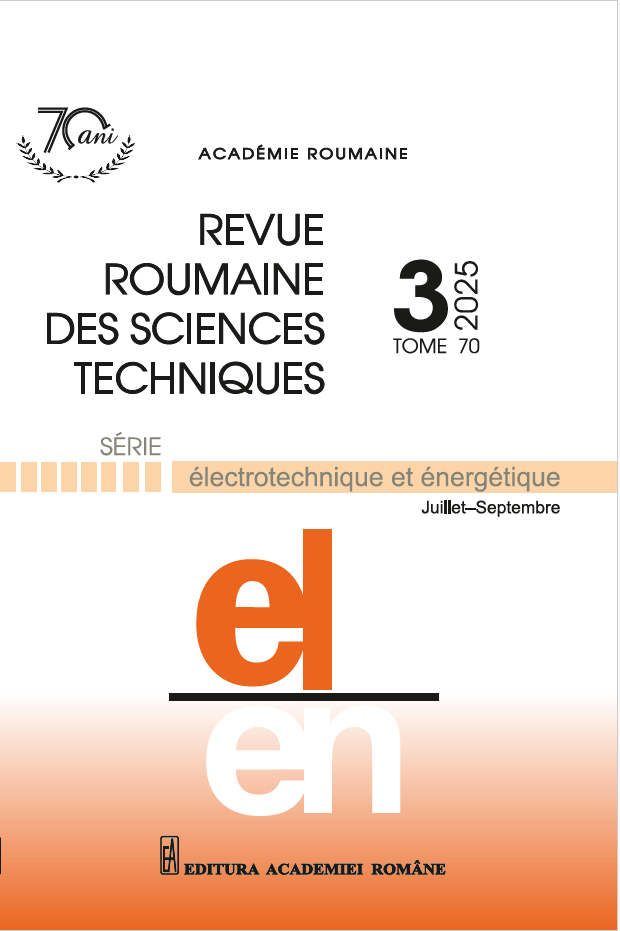EARLY IDENTIFICATION OF BLOOD CANCER THROUGH AUTOMATED ANOMALY DETECTION WITH A CONVOLUTIONAL NEURAL NETWORK
DOI:
https://doi.org/10.59277/RRST-EE.2025.3.22Keywords:
Chronic lymphocytic leukemia (CLL), Deeper with convolutions neural network (DCNN), Acute myeloid leukemia (AML), Acute lymphoblastic leukemia (ALL), Chronic myeloid leukemia (CML)Abstract
Diagnosing and assessing blood cancer requires significant time and effort due to its complexity. Improving the accuracy of information acquired through manual analysis techniques largely depends on automation tools and models. Research is advancing with early detection techniques for examining the features of human blood cells. At this point, researchers have developed deeper convolutional neural network (CNN)-based learning models, primarily utilizing hybrid ensemble DCNN approaches. With accuracy rates exceeding 99 %, this deep learning technology significantly enhances the ability to monitor the progression of blood cancer with precision. Therefore, using progressive technology to offer remedies in clinical diagnosis has become easier. The information obtained from this research, when compared with previous studies using LDSVM, demonstrates the potential to provide a better solution.
References
(1) D. Kumar, Automatic detection of white blood cancer from bone marrow microscopic images using convolutional neural networks, IEEE Access, 8, pp. 142521–142531 (2020)
(2) P. Ranjitha, S. Duth. Detection of blood cancer-leukemia using k-means algorithm, 5th International Conference on Intelligent Computing and Control Systems (ICICCS), IEEE (2021)
(3) R. Mosayebi, Early cancer detection in blood vessels using mobile nanosensors, IEEE transactions on nanobioscience,8, 2, pp. 103–116 (2018).
(4) S. Khan, A review on traditional machine learning and deep learning models for WBCs classification in blood smear images, IEEE Access, 9: pp.10657–10673 (2020).
(5) T.A.M. Elhassan, Feature extraction of white blood cells using CMYK-moment localization and deep learning in acute myeloid leukemia blood smear microscopic image, IEEE Access, 10, pp.16577–16591 (2022).
(6) T. Dharani, S. Hariprasath, Diagnosis of leukemia and its types using digital image processing techniques, 3rd International Conference on Communication and Electronics Systems (ICCES), IEEE, (2018)
(7) R. Sigit, M.M. Bachtiar, M.I. Fikri, Identification of leukemia diseases based on microscopic human blood cells using image processing. International Conference on Applied Engineering (ICAE), IEEE, (2018)
(8) V.J. Ramya, S. Lakshmi, A methodical review of diagnosis and classification of leukemia using blood microscopic images, International Conference on Communication and Signal Processing (ICCSP), IEEE, (2019)
(9) T. Kattenborn, Review on Convolutional Neural Networks (CNN) in vegetation remote sensing, ISPRS Journal of Photogrammetry and Remote Sensing, 173, pp.24-49, (2021)
(10) O. Calin, Deep learning architectures, New York City, Springer International Publishing, (2020)
(11) M.S. Alim, S.D. Bappon, S.M. Sabuj, M.J. Islam, M..M Tarek, M.S. Azam, M.M. Islam, Integrating convolutional neural networks for microscopic image analysis in acute lymphoblastic leukemia classification: A deep learning approach for enhanced diagnostic precision, Systems and Soft Computing (2024).
(12) N. Alshdaifat, H.A. Owida, Z. Mustafa, A. Aburomman, S. Abuowaida, A. Ibrahim, W. Alsharafat, Automated blood cancer detection models based on EfficientNet-B3 architecture and transfer learning, Indonesian Journal of Electrical Engineering and Computer Science,36, 3 (2024).
(13) K. Lalithkumar, M.A. Priyanga, S. Sandhya, M. Karthiga, CapsENet: Deep Learning based Acute Lymphoblastic Leukemia Detection Approach, 8th International Conference on I-SMAC (IoT in Social, Mobile, Analytics and Cloud)(I-SMAC), pp. 1577–1584, IEEE, (2024)
(14) S.A. Preanto, M.T. Ahad, Y.R. Emon, S. Mustofa, M. Alamin, A study on deep feature extraction to detect and classify Acute Lymphoblastic Leukemia (ALL), arXiv preprint arXiv:2409.06687 (2024).
(15) M. Iswarya, Detection of Leukemia using machine learning, International Conference on Applied Artificial Intelligence and Computing (ICAAIC), pp. 466–470, IEEE (2022).
(16) A. Shridhar, P.S. Baghel, R. Mahobia, O. Bhargava, S. Totade, Study of prevalence of acute leukemia, International Journal of Health Sciences, 6, S8, pp.6995–7001 (2023).
(17) P.D. Saragea, A Comprehensive Overview of Malignant Lymphomas: Classification, Epidemiology, and Clinical Insights (2024)
(18) B.T. Hill, Etiology of cancer, Clinical Ophthalmic Oncology: Basic Principles, pp.11–17, (2019)
(19) Q. Lu, D. Yang, H. Li, H, T. Niu, A. Tong, Multiple myeloma: signaling pathways and targeted therapy, Molecular Biomedicine, 5, 1, pp. 25 (2024).
(20) A. Ramaiah, P.D. Balasubramanian, A. Appathurai, M. Narayanaperumal, Detection of Parkinson's disease via Clifford gradient-based recurrent neural network using multi-dimensional data, Rev. Roum. Sci. Techn. – Électrotechn. Et Énerg., 69, 1, pp.103–108 (2024).
(21) M.B. Priya, C. Ramakrishnan, S. Karthik, Fetal 3D-echo classification and segmentation using color and textural features for tr detection, Rev. Roum. Sci. Techn. – Électrotechn. Et Énerg., 69, 1, pp.115–120 (2024).
(22) S. Palanisamy,T. Ramasamy, MEDI-NET: cloud-based framework for medical data retrieval system using deep learning, Rev. Roum. Sci. Techn. – Électrotechn. Et Énerg., 69, 2, pp.255–260, (2024)
(23) A. Appathurai, A.S.I. Tinu, M., Narayanaperumal, M., MEG and PET images-based brain tumor detection using Kapur’s Otsu segmentation and Sooty optimized MobileNet classification, Rev. Roum. Sci. Techn. – Électrotechn. Et Énerg., 69, 3, pp. 359–364 (2024).
(24) A. Karim, A, Azhari, M. Shahroz, S. Brahim Belhaouri, K. Mustofa, LDSVM: Leukemia cancer classification using machine learning, Computers, Materials & Continua, 71, 2 (2022).
Downloads
Published
Issue
Section
License
Copyright (c) 2025 REVUE ROUMAINE DES SCIENCES TECHNIQUES — SÉRIE ÉLECTROTECHNIQUE ET ÉNERGÉTIQUE

This work is licensed under a Creative Commons Attribution-NonCommercial-NoDerivatives 4.0 International License.


